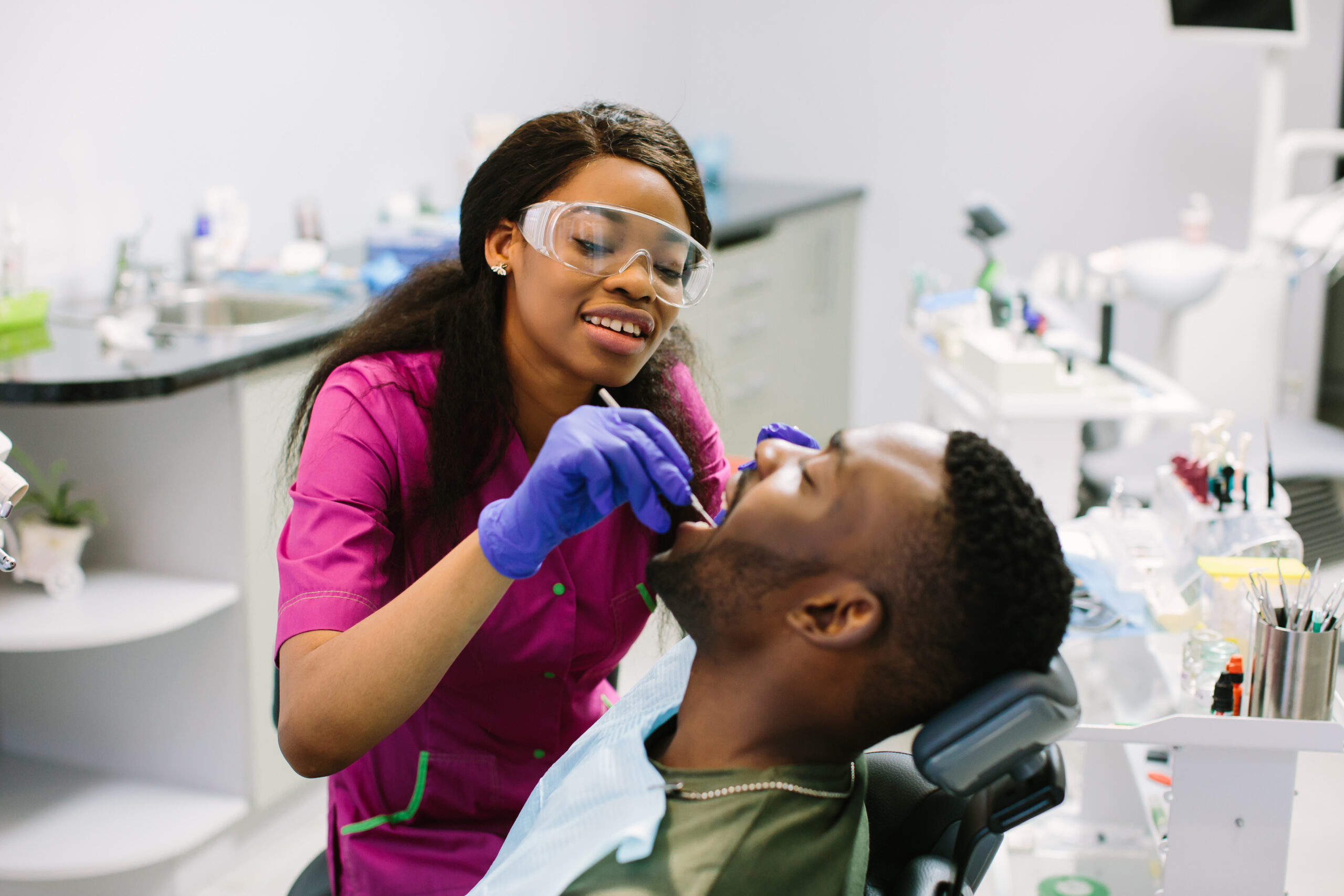Teeth whitening is a popular cosmetic dental treatment designed to lighten the color of your teeth, removing stains and discoloration. Over time, teeth can become stained or yellowed due to various factors like aging, diet, tobacco use, or poor oral hygiene. Teeth whitening offers a solution to restore your smile’s brightness. However, before undergoing any whitening treatment, it’s important to understand how it works and whether it is safe for your teeth and gums.
What Is Teeth Whitening?
Teeth whitening involves the use of bleaching agents, typically hydrogen peroxide or carbamide peroxide, to remove stains from the enamel, the outer layer of your teeth. These whitening products work by breaking down the stains and discoloration, making your teeth appear lighter and brighter.
There are two main types of teeth whitening:
1. In-Office Whitening
- Performed by a dentist, this method uses stronger bleaching agents that provide faster, more dramatic results.
- The process typically involves applying a whitening gel to your teeth, followed by the use of a special light or laser to accelerate the whitening process.
2. At-Home Whitening
- This method includes over-the-counter products like whitening toothpaste, strips, gels, or trays.
- Some products use weaker concentrations of bleaching agents and take longer to show results.
- Your dentist may also provide custom whitening trays that allow you to apply a professional-grade gel at home.
Is Teeth Whitening Safe?
Teeth whitening is generally safe when done correctly and in moderation. However, there are some important considerations:
1. Enamel Safety
- When used correctly, whitening products won’t damage your enamel. The process only affects the stains on your teeth, not the structure of the enamel.
- Overuse or misuse of whitening products, however, can lead to enamel erosion or increased tooth sensitivity.
2. Tooth Sensitivity
- Some people may experience temporary tooth sensitivity after whitening treatments. This is usually mild and goes away shortly after treatment.
- If you have sensitive teeth or gums, it’s essential to consult with your dentist before undergoing any whitening treatment.
3. Gum Irritation
- Whitening gels can sometimes cause gum irritation if they come into contact with soft tissue. Professional treatments are usually more controlled, reducing the risk of irritation.
4. Results May Vary
- Whitening results can vary depending on the severity and type of stains. Teeth with intrinsic stains (deep stains) may not respond as well to whitening products compared to surface-level stains (extrinsic stains).
- If you have dental restorations like crowns, veneers, or fillings, these won’t whiten, so your dentist may recommend a different approach.
5. Professional Supervision
- Consulting with a dentist before whitening is always a good idea to ensure that your teeth are healthy and that whitening won’t cause any issues.
- A dentist can also help you choose the best whitening option based on your needs and dental health.
How to Safely Whiten Your Teeth
Choose a Dentist-Approved Product
- Always opt for whitening treatments that have been approved by your dentist, especially if you’re considering over-the-counter options.
- Professional treatments offer more controlled and safer results.
Follow Instructions Carefully
- Whether using at-home products or professional treatments, always follow the instructions to avoid overuse and possible harm to your enamel and gums.
Maintain Good Oral Hygiene
- Brush and floss regularly to maintain results and prevent stains from forming again.
- Avoid foods and drinks that are known to stain teeth, such as coffee, red wine, and tobacco.
Consult a Dentist Before Whitening
- If you have existing dental problems such as cavities, gum disease, or sensitive teeth, your dentist can advise you on the safest whitening options.
Conclusion
Teeth whitening is an effective way to enhance the appearance of your smile, but it’s important to approach it with care. When done correctly and under professional guidance, teeth whitening is a safe and reliable procedure. Always consult your dentist before starting any whitening treatment to ensure it’s suitable for your dental needs and to avoid any adverse effects. With proper care, you can enjoy a brighter smile for years to come!
